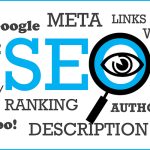
Pagination is the procedure of separating digital or print content into multiple pages. Many websites get benefitted with this process in terms of eCommerce website design. Let’s have a detailed discussion on this process regarding what issues it results, solutions of those issues and the right time of using pagination. Just read on:
What issues result from Pagination?
Here two prime issues can be considered while using pagination:
1. Problem of content duplicity:
While using pagination, generally many pages possibly get same content, Meta title and Meta description.At the time it happens, Googlebot may cross over the pages which must return to the search queries.
2. Googlebot’s crawling issue:
Depending on its authority, Googlebot crawls every site. Thus, if you have a new site which contains many unnecessary pages, there is the risk that Google won’t index them, particularly if the clicks’ level is deeper. You’ve a possibility of losing vital pages from being indexed in search queries.
How can be Pagination issues solved?
1.You can use the commands “rel=prev” (at last page) and “rel=next” (at first page). Using them, you can create a connection between all pages. As Google will verify them as a single entry, you can avoid duplicate or crawling issues.
2. You can also use “rel=canonical” command when there’s a “view all” page. This way, you can make Google that all of your pages are represented by the preferred “view all” page.
To use this application, simply add a “rel=canonical” tag inside every page’s section, indicating to the view-all page.
Google considers it as a user-friendly technique, thereby promoted as being the best one available.
You should be highly alert about the relevant time of using this strategy and when:
– The view-all pages’ loading time is very fast and the navigation is quite easier.
– All other pages’ keyword combinations can be added in the view-all page in terms of optimisation.
3. As per Google, the option of ‘not doing anything’ is also there since pagination is a common process and not required since the algorithms utilised can simply detect and return to the search queries the most appropriate result withouta requirement of using any command like “rel=canonical”, “rel=next” or “rel=prev”.
4. Use of ‘no-index command’ is another solution. Using it, you can keep Google from indexing every page and allow just the first page for being indexed. You can apply this simple method; however, it also hides the complete content of your site from Google index.
The right time of using Pagination:
– If only required
– While displaying products list like we find in eCommerce websites
– If there’s a “view-all” page or not
– Possibly not for an article
Basically, pagination does not just affect the SEO but also the user experience.It’s crucial for eCommerce website design to make the site better indexed. It also enables to maximise your targeted keywords in one page if you use the rel=canonical for a “view=all” page.
To investigate which solution is more helpful for users, be it pagination with a view-all page, without a view=all page, or only a view-all page, you can simply apply some A/B tests, test a real-life scenario and measure the way that will bring you a better income.
If you have any suggestion,feel free to share with us.
![Insert, Update, Delete in PHP MySQL example [GIT downloads] Insert, Update, Delete in PHP MySQL example [GIT downloads]](https://www.raghwendra.com/blog/wp-content/uploads/2021/10/header-post-blog-150x150.jpg)


